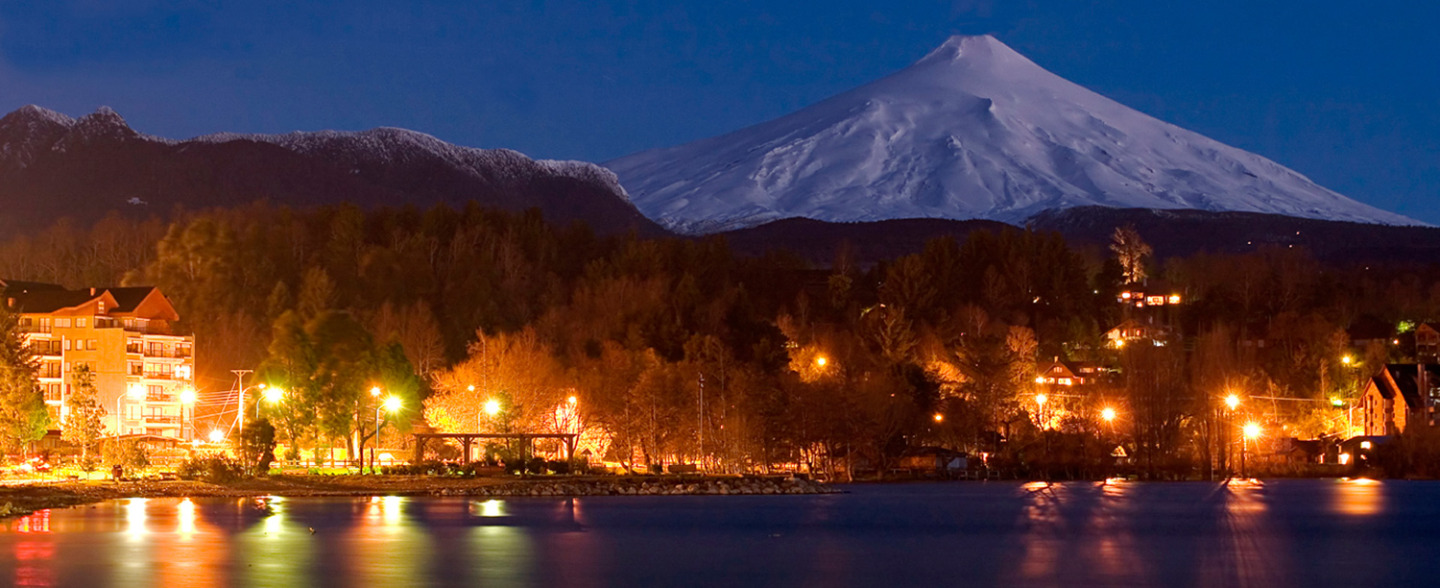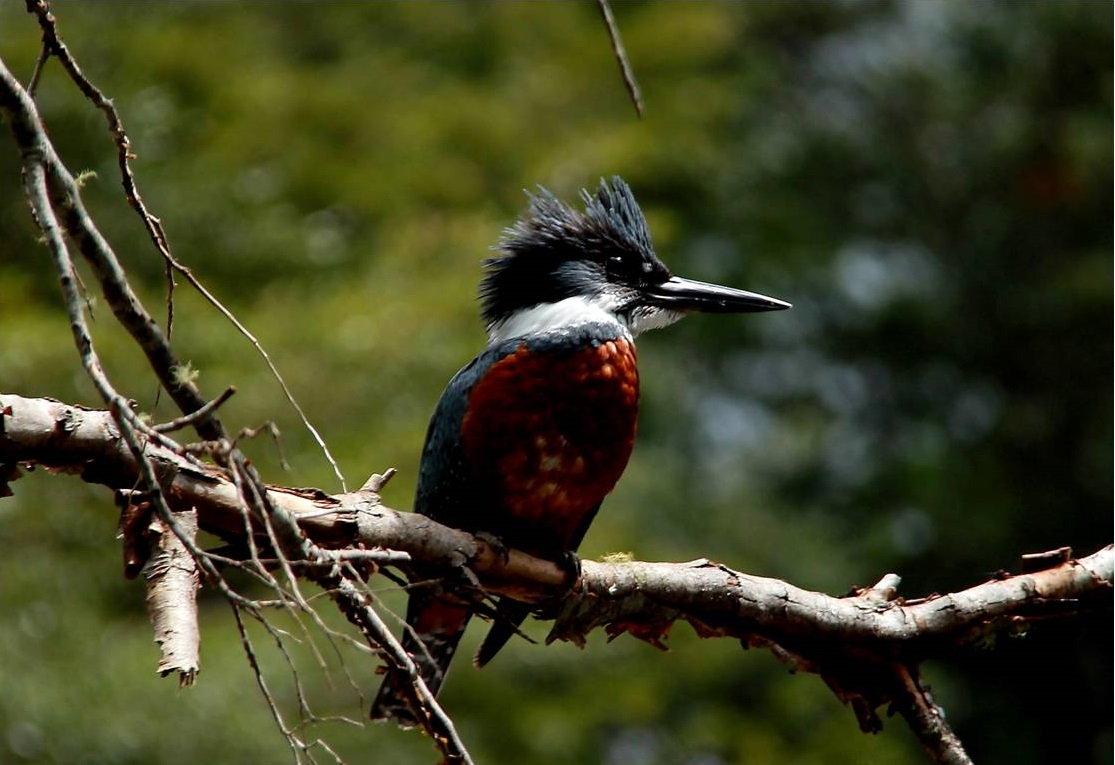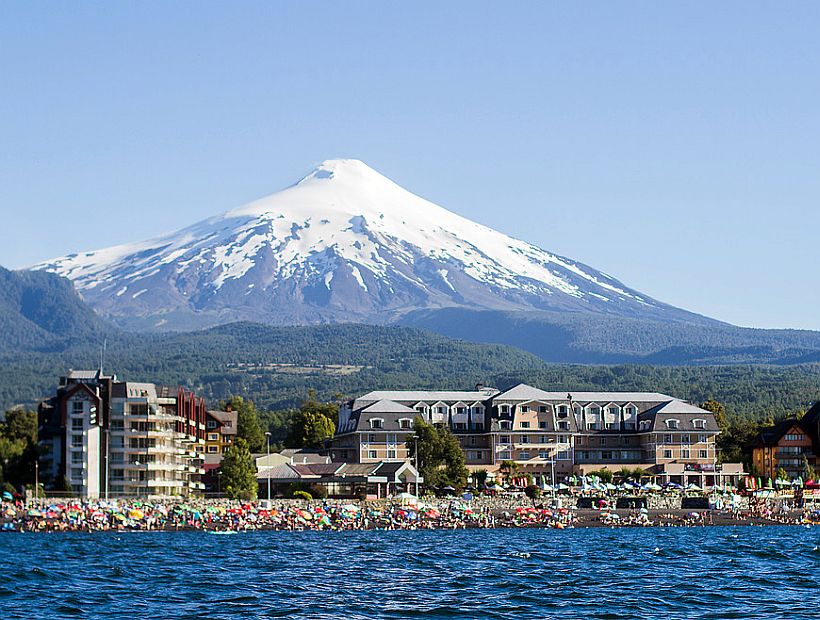WHERE TO GO IN PUCóN AND VILLARRICA
Avenida Costanera de Villarrica: (Costanera de Villarica Avenue)
The Valdivia area began to fill in 8000 BC, but the first traces of a population organized emerged between 300 and 1200 AD, where groups of hunter-gatherers who developed an incipient agriculture and livestock appeared. Over time these groups would become the Mapuche tribe.
In 1552, the Spaniard Geronimo de Alderete founded Villarrica on the banks of the Tolten river and the west side of Lake Villarrica, formerly Mallalafquén. Gold mines were expected to be found in the area and turned into a passage between the Pampas and the Atlantic.
The constant battles with the Mapuche broke the peace of the newly founded city, being evacuated in 1554 after the Battle of Tucapel. After being abandoned, it was completely destroyed by the Mapuche. That same year in October, Villarrica was resettled and started a large growth in the mining of gold and silver.
This boom lasted until 1598, with the Battle of Curalaba where the Mapuche were winners. They maintained their siege on the city until 1602, when again and definitely took it over and burned down what was left of their buildings.
The ruins of the city of Villarrica were abandoned for 280 years. In 1882, after the Parliament of Putue, they were able to approve the rebuilding of the area. In 1883 a fort was built in the area now corresponds to Pucon.
From the beginning years of Villarrica as a city, its beautiful surroundings, hot springs, lakes and snow-capped volcano became a tourist attraction spot, and in 1923 the first hotel was inaugurated in the city. Some boats made trips to Pucon tours to the volcano crater.
Pucon was always a vacation destination, especially visited by German settlers. This area, which was a military settlement in its beginning, to protect the borders of Villarrica, and became an attractive place that led to the construction of a hotel by part of the Ferrocarriles del Estado (State Railways), with a railway that made trips by train toto the zone.
With it, new hotels were established in the area, allowing sustained growth of the tourism industry which reached its peak in the 80s, and it is maintained until today.
This trip borders the beach of Lake Villarrica and is ideal for water activities such as fishing, sailing, among others. It gives you a beautiful view of the lake and the volcano of the same name.
Museo de Villarrica: (Villarica Museum)
It offers collections of objects from the Neolithic period that belonged to the Mapuche people such as jewelry, pottery, leather goods, as well as part of the colonial era documents.
Ferias Artesanales: (Craft Fairs)
Here you can find all kinds of products produced in the area, along with a replica of a “ruca mapuche” (Mapuche hut), a typical house of this village made with reed and cattail.
Parque Nacional Villarrica: (Villarica National Park)
It is located 12 kilometers from Pucón and offers more than 60 thousand acres where there are several attractions like the Villarrica Volcano (2840 meters), the Quetrupillán Volcano (2360 meters) and the Lanin Volcano, near the border with Argentina (3774 meters).
In addition, inside you can find several lagoons like Blanca, Azul, Verde, Los Patos, Quillelhue, Verde and Huinfiuca, and the rivers Trancura, Palguín and Turbio, to name a few. In all of theses bodies of water you can perform water activities such as fishing, sailing, rafting, kayaking, among others.
It is a rainy area throughout the year with snow in the winter. This permits it to have large native vegetation, where you can find pine, coigues, beech and evergreen beech, which are habitat of indigenous fauna such as the harrier red fox, quique, pumas, pudú, auilucho, peuco, eagle, and many more.
Volcán Villarrica: (Villarica Volcano)
It is the main attraction and the postcard of the city of Villarrica. It is active and has a permanent plume. Its crater is covered by a large glacier of about 40 square kilometers.
It also has volcanic caves, which extend up to 700 meters and can be toured by visitors with a guide. Promotions are also given out as well as a climb up the side of the volcano.
At its northern slope, the Pucon Ski Center is located.
Centro de Ski Pucón: (Pucon Ski Center)
This ski resort is located on one of the slopes of the Villarrica Volcano and within the grounds of the National Park of the same name. It has excellent services such as chairlifts and arrastre, fields with different levels of difficulty, ski schools, equipment rental, cafes and more.
It is administered by the Gran Hotel Pucón and the snow season runs each year from June to October.
Pucón:
It is the country's largest lake resort. In addition to its beach front on the shores of Lake Villarrica, it has attractive surroundings like forests, rivers, waterfalls and trails, where all kinds of outdoor activities can be performed and this is why it is known as the Adventure Capital of Tourism.
Besides this it also has hot springs and excellent tourist services.
Parque Nacional Huerquehue: (Huerquehue National Park)
Within this natural area of 12 thousand acres we can find several lakes such as Verde Lake, Toro Lake and Chico Lake. It has hiking trails and you can observe the flora and fauna of the environment, as well as the beautiful surrounding countryside.
The forests of araucarias are highlighted in this area, which are over 2,000 years old. Traverse is recommended throughout the year, but always with warm clothing, regardless of the season.
Volcán Quetrupillán: (Quetrupillán Volcano)
It lies between the Villarrica Volcano and Lanin Volcano. Here you can also do climbing excursions and trails crossing lush forests. It is a lesser known destination but with beautiful scenery, a place that is worth seeing.
Salto de la China: (China Falls)
Located 30 kilometers from Pucon, it is a waterfall with a height of 73 meters, surrounded by lush nature of the forests in the area. It is located near the Termas de Palguín.
Termas de Palguín: (Palguin Springs)
They are located 30 kilometers southeast of Pucon and correspond to outdoor pools accross from the Villarrica volcano. Its waters are of volcanic origin and have healing properties for rheumatic diseases, skin conditions and nervous system, among others.
It has 15 wells of thermal water directly into the natural terrain, but have wooden or sement hot tubs, a heated outdoor pool and accommodation.
Termas de Coñaripe: (Coñaripe Springs)
This resort is located on the lakeside of Pellaifa Lake, just 15 miles away from Coñaripe and 60 kilometers away from Villarrica. Its waters, completely natural, emerge from 6 main aspects at temperatures reaching 78° C and spa services to relax and rest.
It has a hotel, without roof installations and two outdoor pools. It also offers all kinds of outdoor activities to enjoy the beauty of its surroundings, such as hiking and horseback riding, among others.
Termas Geométricas: (Geometricas Springs)
They are found within the forests of the Villarrica Volcano National Park, on the road from Coñaripe to Colguin.
Its waters are of volcanic origin, with temperatures reaching 89° C and that sprout from more than 60 natural springs in the middle of a creek that was inaccessible but was enabled through 20 pools cut out from the rock, and walkways made from coigue wood, which allows you to travel the length of 450 meters in the area.
At night, the bridge is illuminated with candles to enjoy a romantic bath. Construction of the springs also includes a barbecue made from coigue wood wherean open fire nrightens the area, to chat and rest after a relaxing thermal bath.
Other services include bathrooms, lockers and dressing rooms, but do not have places to stay within the springs.
LicanRay:
This beautiful town is located on the shore of Lake Calafquén. It has four sectors that are used as spas: the peninsula, which offers a full view of the surrounding, playa chica, playa grande and the embaracadero (all beaches).
Lago Calafquén: (Calafquen Lake)
It is located around Villarica and Pucon, 30 kilometers south of Villarrica. It belongs to the de Siete Lagos (Seven Lakes) circuit area, and is ideal for water sports such as fishing, yachting, swimming, boating, and more.
Coñaripe:
It is another lakeside resort located on the shore of Lake Calafquén. It has an attractive beach that is 3 kilometers long. It is also in one of the entrances to the Villarica National Park, one of the most beautiful areas of exuberant nature.
Río Trancura: (Trancura River)
It is one of the most important rivers of the 9th region of la Araucanía and the main tributary of Lake Villarrica. In its rushing waters you can practice sports like fishing and it is most famous for being ideal for rafting, because of their rapids that can get up to grade 4.



